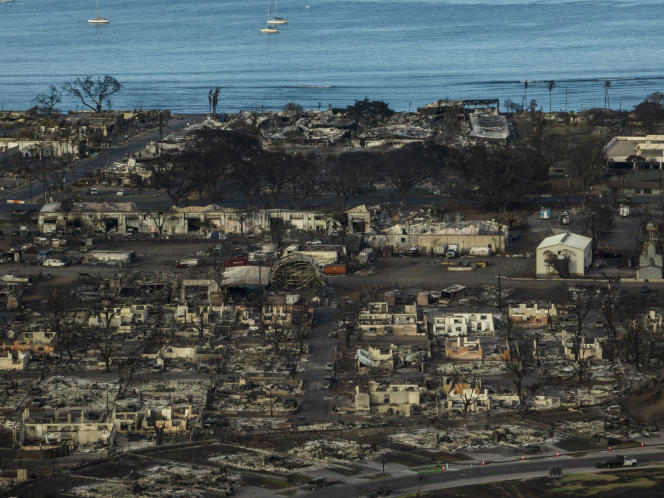Lhe tropical paradises are also starting to burn. The fires which ravaged, from August 8 to 9, the island of Maui, in the archipelago of Hawaii (United States), recorded the heaviest human toll linked to fires for almost a century in the States. United – 111 dead and hundreds missing, according to the latest report from the authorities on Thursday August 17. They also struck a chord because of the dramatic and spectacular images that circulated on social networks, showing hundreds of residents and tourists rushing to the sea to escape the flames.
Surprising in an environment dominated by lush rainforests, on an archipelago benefiting from sustained rains and located in the middle of the Pacific, the destructive potential of the fires resulted from a combination of factors: the heavy trend of warming, the development of the phenomenon El Niño, landscape transformations linked to agricultural activities and the presence of invasive plant species. The immediate causes of the fire outbreak remain the subject of investigations.
“Hawaii is located on the periphery of the tropics and is sensitive to the subtropical dry high pressure beltexplains climatologist Michael Mann, professor in the Department of Earth and Environmental Sciences at the University of Pennsylvania (United States). Climate change is widening this belt and, combined with rising temperatures, is tending to dry out soils, leading to increased drought, like the one that hit Maui this summer. » In Lahaina, the west Maui town razed by the fire, “precipitation data shows decline”points out the geographer Matthew Plackett, associate professor at the University of Coventry (United Kingdom).
“Flash Drought”
Another sign of this drying up is the decline of the rivers. In a study published in 2019 in the journal Hydrological Processesresearchers from the University of Hawaii at Manoa have estimated the flow variations of 23 rivers, on the five main islands of the archipelago, since the end of the 1960s. The authors note “a general drying up”. Since the end of the 1980s, they have observed an average drop in low water flows of more than 10% per decade. During the dry season, from May to October, they note that the rivers which are interrupted are more numerous, “indicating that some streams may become intermittent”.
If the destruction of the city of Lahaina has marked the spirits, this drying trend has discreetly imposed on the archipelago, for several years, increasing pressure. “During most of the twentiethe century, Hawaii had approximately 5,000 acres [2 000 hectares] burned every year”, Clay Trauernicht, fire management specialist at the University of Hawaii at Manoa, told the Associated Press (AP). Over the past 20 to 30 years, that area has tripled to quadrupled, he added. Combined with the development of tourism, the drying up of the islands is also reflected in episodic tensions over the supply of drinking water, used by the large hotel complexes on the coast: as early as January, the local press reported supply cuts in many small towns in West Maui.
You have 42.51% of this article left to read. The following is for subscribers only.
